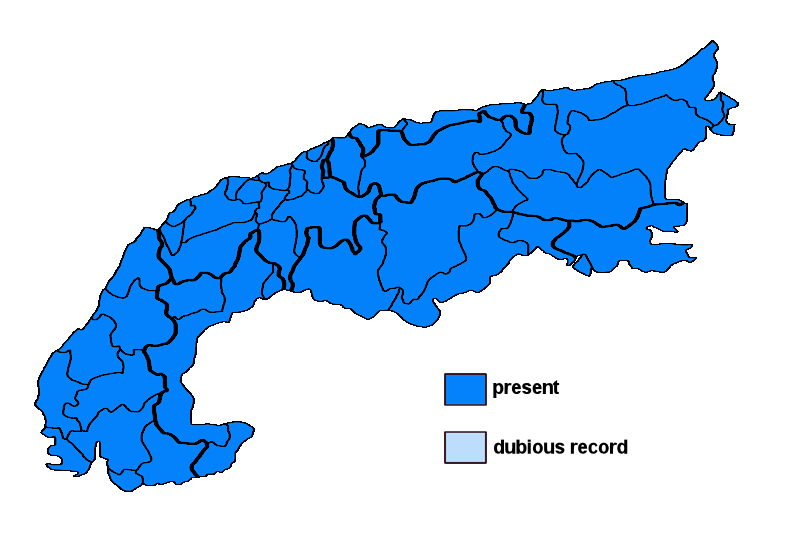Physcia aipolia (Ehrh. ex Humb.) Fürnr.
Syn.: Lichen aipolius Ehrh. ex Humb., Parmelia aipolia (Ehrh. ex Humb.) Ach., Parmelia stellaris (L.) Ach. var. aipolia (Humb.) Hazsl., Physcia aipolia (Ehrh. ex Humb.) Fürnr. var. acrita (Ach.) Hue, Physcia aipolia (Ehrh. ex Humb.) Fürnr. var. anthelina (Ach.) Vain., Physcia aipolia (Ehrh. ex Humb.) Fürnr. var. cercidia (Ach.) Nyl., Physcia stellaris (L.) Nyl. var. aipolia (Ehrh. ex Humb.) Th. Fr., Physcia stellaris (L.) Nyl. var. angustata Nyl.
Lichenised.
Substrate: bark, lignum
Altitudinal range: from the mesomediterranean belt (potential vegetation: evergreen broad-leaved forests dominated by Quercus ilex) to the subalpine belt (potential vegetation: open, taiga-like forests dominated by Larix decidua and/or Pinus cembra and Rhododendron)
Note: a mainly temperate species, altitudinally intermediate between Ph. biziana and Ph. stellaris, most frequent at low elevations only in humid areas. Molecular data suggest that the Physcia aipolia-Ph. caesia-complex includes several entities which, differing also in morphology and/or chemistry, can be treated as distinct species.
Austria: Vorarlberg; Tirol; Salzburg; Kärnten; Steiermark; Oberösterreich; Niederösterreich (incl. Wien); Burgenland; Germany: Oberbayern; Schwaben; Switzerland: Appenzell; Bern; Fribourg; Glarus; Graubünden; Luzern; St. Gallen; Schwyz; Ticino; Uri; Unterwalden; Vaud; Valais; France: Alpes-de-Haute-Provence; Haute-Alpes; Alpes-Maritimes; Drôme; Isère; Savoie; Haute-Savoie; Vaucluse; Var; Italy: Friuli; Veneto; Trentino Alto Adige; Lombardia; Piemonte; Valle d'Aosta; Liguria; Slovenia: Alpine and Pre-Alpine Slovenia; Trnovsky Gozd; Liechtenstein





